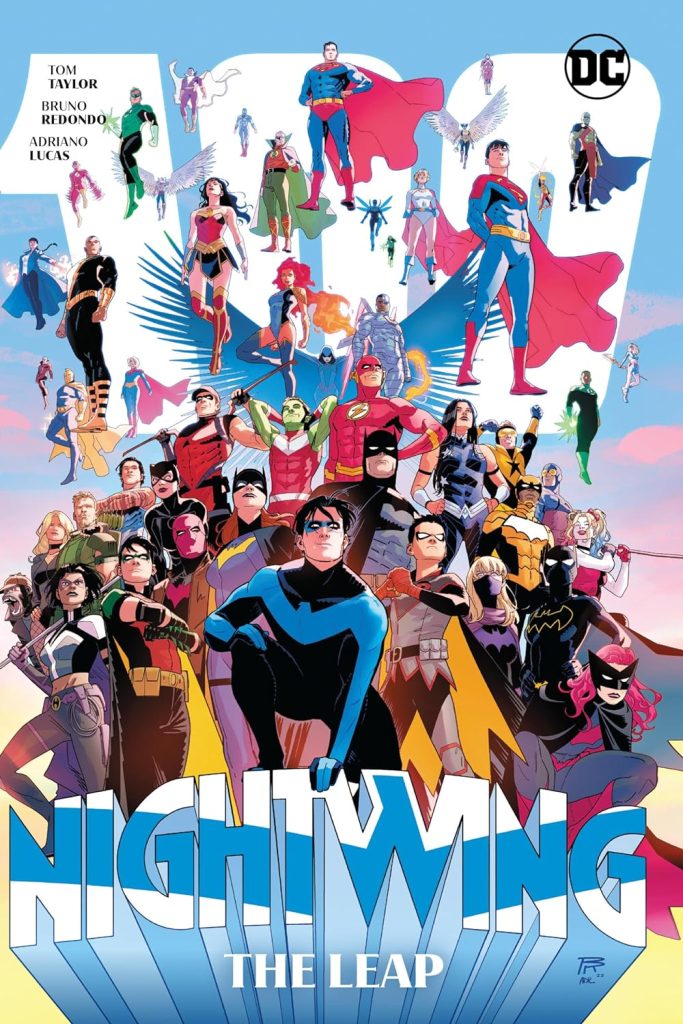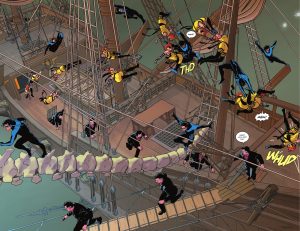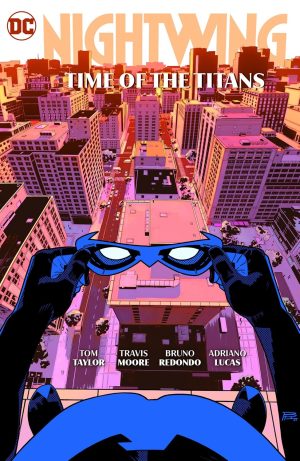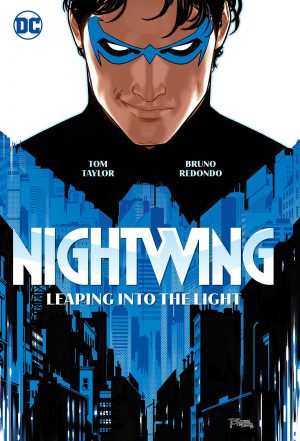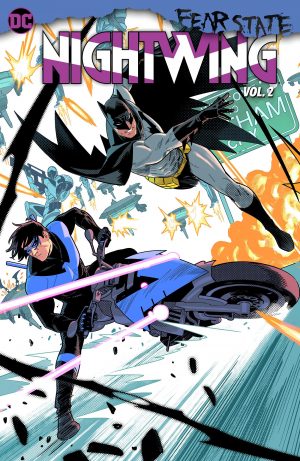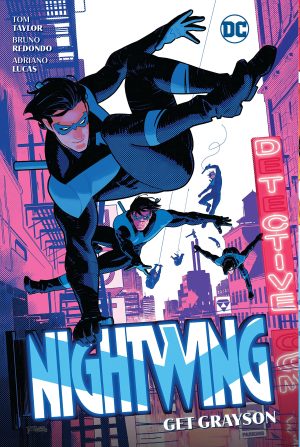Review by Ian Keogh
The Leap is very much a transitional collection, drawing a line under how things have been in Blüdhaven and setting up what’s to come. Thankfully, it’s not as calculated as that, and while one might want more Bruno Redondo art, there’s greater variety of tone than in earlier collections. And when Redondo is on the art, he’s spectacular, as seen by the sample spread.
The Battle for Blüdhaven’s Heart drew a grisly line under Blockbuster’s criminal reign, but a few loose ends are efficiently tied up in an opening chapter that also cements Dick Grayson and Barbara Grayson’s new relationship. That’s been nicely handled by Tom Taylor, with a pleasing absence of hand-wringing and soul-searching.
What it segues into might not be to all tastes, seeing as it features Nite-Mite, a mischievous, magical fifth dimensional imp determined to complicate Dick’s life. It’s looking to be all whimsy and daft situations, but Taylor manages to make a switch into something more in keeping with Nightwing’s world. However, Daniele Di Nicuolo’s art tells the story, but without any great spark. It’s all close-ups and effect shots.
The plot thread running through most stories is Blockbuster’s removal leading to a power gap in Blüdhaven. It’s something assorted criminal types believe to be a vacancy up for grabs rather than a new beginning, among them Heartless, whose background is given an extended spotlight. It’s interesting for revealing Heartless works with a partner who plays the long game and may not share exactly the same agenda.
It’s with Heartless that The Leap closes, providing an extended showdown that’s not as thrilling as you might want, nor expect from Taylor. Read Batman long enough and eventually the anniversary story where all his enemies are released from Arkham comes around again, and that’s Heartless’ plan. Except Nightwing lacks a formidable rogues gallery, so it’s just loads of convicts with guns set loose along with an elephant man. Assorted guest artists contribute pages, some good, some better than that, but in service of a story that disappoints. It’s not just the unoriginal starting point, it’s the generic nature overall. It ends with an interesting idea, though, and that sets up Time of the Titans.
